Infinitely Many New Pages from the Mexican Codex Borgia
The history of the last 500 years as foretold by the indigenous people of Mesoamerica (not really) ☄️

This is a follow-up post (of sorts) to Common Tech Jobs Described as Cabals of Mesoamerican Wizards. It contains a lot of images.
Forget its name, which refers to some Italian cardinal who owned it for a while — the Codex Borgia is one of the very few books in the world that was made with no European or even Eurasian influence. It was created in what is now Mexico in the early 16th century, before the Spanish invaded the area. We don’t know which of the many peoples of Mesoamerica made it: perhaps the Tlaxcalans, perhaps the Mixtecs.
The Codex Borgia is a tonalamatl, a divinatory almanac based on one of the two Mesoamerican calendars, the sacred 260-day tōnalpōhualli. Its pages, made of amate tree bark, contain drawings of religious import: signs associated with days, images of gods, depictions of rituals. It was presumably used to prognosticate events in the life of people: marriage, good fortune, disease, death.
For the longest time, it was assumed that the Codex Borgia had exactly 76 pages. (One can view them all on Wikipedia.) Very recently, however, it has transpired that the Codex is, in fact, infinite; and that its divinatory power goes far beyond simple predictions of life events. Indeed it has foreseen much of what has happened since.
The Codex Borgia saw the end of the Aztec Empire. Experts believe that the following page represents the fateful meeting between the Spanish conquistador, Hernán Cortés, and the Aztec emperor Moctezuma:
Omens, of course, had foretold the arrival of the Europeans. They were thought to be heralds of Quetzalcoatl, the feathered serpent god. Strange sights, including a comet, had been seen in the night sky.
Although highly stylized, the drawing below is thought to represent the march of Spanish soldiers on the Great Causeway leading into Tenochtitlan, shortly before the fall of the city.
But the clairvoyance of the Codex Borgia was not from limited to what is now Mexico. It knew, for instance, of Atahualpa, last Inca emperor in Peru.
As well as the man who would conquer his empire, Francisco Pizarro.
And so on for many figures and events of the 16th century. The Codex Borgia saw the reign of Elizabeth I in England; it saw Jacques Cartier plant a cross in Canada to claim it for the French. It saw Copernicus gazing at the planets and guessing the correct structure of the cosmos.
In fact, it is possible to reconstruct much of the world history from the Codex. It predicted that, more than a hundred years later, the Mughal emperor Shah Jahan would commission a great mausoleum of marble, the Taj Mahal, for his late wife.
It foresaw the establishment of the shogunate in Japan under Tokugawa Ieyasu.
It depicted, long before his time, the Sun King, Louis XIV of France, who would reign for more than seven decades.
It saw the great changes that the Enlightenment era would bring, from Isaac Newton’s investigation into the nature of light…
… to Denis Diderot compiling the Encyclopédie…
… to Antoine Lavoisier and his chemistry experiments.
It saw the great political figures of the Revolutionary era, such as George Washington and Napoléon Bonaparte.
And it predicted the nascent Industrial Revolution, with its steam machines.
It is unknown how the authors of a pre-Columbian Codex could divine the great wealth of engineering and scientific achievements that the 19th century would bring. And yet, it foresaw the great monuments:
The great inventions:
Even the advances in biology and geology, from Charles Darwin’s studies of natural history…
… to the Bone Wars between the paleontologists who rushed to discover dinosaur skeletons.
Not to mention the great political figures of this age. Queen Victoria of the United Kingdom, of course, and Empress Dowager Cixi of Qing China, and President Abraham Lincoln of the United States: the infinite Codex Borgia knows them all.
The Codex Borgia predicted much of the 20th century, too, starting with the invention of flight…
… and the tragic end of the Titanic.
The great scientists of modern physics are to be found within the many pages of the Codex: Marie Curie, Albert Einstein.
But also, the darker figures of the era.
All of World War II is found in the Codex Borgia. Though the ships are inaccurate (those Mixtecs or Tlaxcalans did get some things wrong), this is believed to predict the Japanese attack on Pearl Harbor:
This is the bombing of perhaps Berlin or Dresden:
More disturbing, perhaps, are its depictions of the atomic explosions at Hiroshima and Nagasaki in rather graphic detail.
The post-war world saw many rapid developments, and so did the Codex Borgia. Gandhi makes an apparition:
As well as Neil Armstrong setting foot on the Moon. (We note a rather interesting stylistic flaw in the face of the astronaut.)
An interesting use of color here, believed to represent the rainbow flag and the beginnings of the LGBT movement:
The Codex was uncannily good at predicting even the most surprising examples of architecture, as it did with the Sydney opera house.
Even the iconic picture of the tank at the Tiananmen Square protests has made it into its infinite pages.
A few more figures of the recent decades:
(The experts can only speculate as to why the Codex wrongly predicted Vladimir Putin to have long hair.)
Finally, the 21st century: although not its clearest prediction, we think that the artists of the Codex Borgia attempted here to depict the attacks against the World Trade Center in New York, in September 2001.
While it foresaw the fall of the twin towers, it saw the rise of one taller than all: the Burj Khalifa of Dubai.
The Codex likes Barack Obama…
… enough to occasionally depict him in the likeness of a Mesoamerican god.
It knows of Kim Jong-un, too, and Donald Trump (or so we think, despite the strange hair).
Even very recent events were predicted: manifestly it knew of the sale of Twitter to Elon Musk.
The obvious question now is: can the Codex Borgia divine our future?
The answer is yes, it can; but unfortunately its prognostications are difficult to interpret. This is its prediction for the year 2023:
And this, its idea of what a Martian colony could look like:
As for when the Codex is queried about the End of the World, we get:
As these drawings raise more questions than they answer, it seems that the Codex’s predictions shall, for the time being, remain a mystery.
Should you want to use the tonalamatl to divine the past, present, or future yourself, you can do so here.


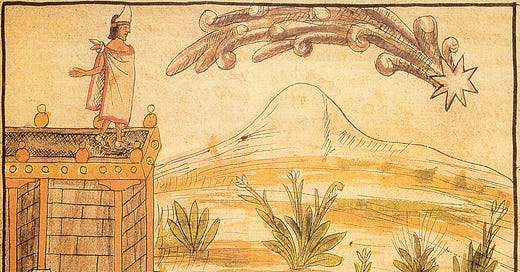



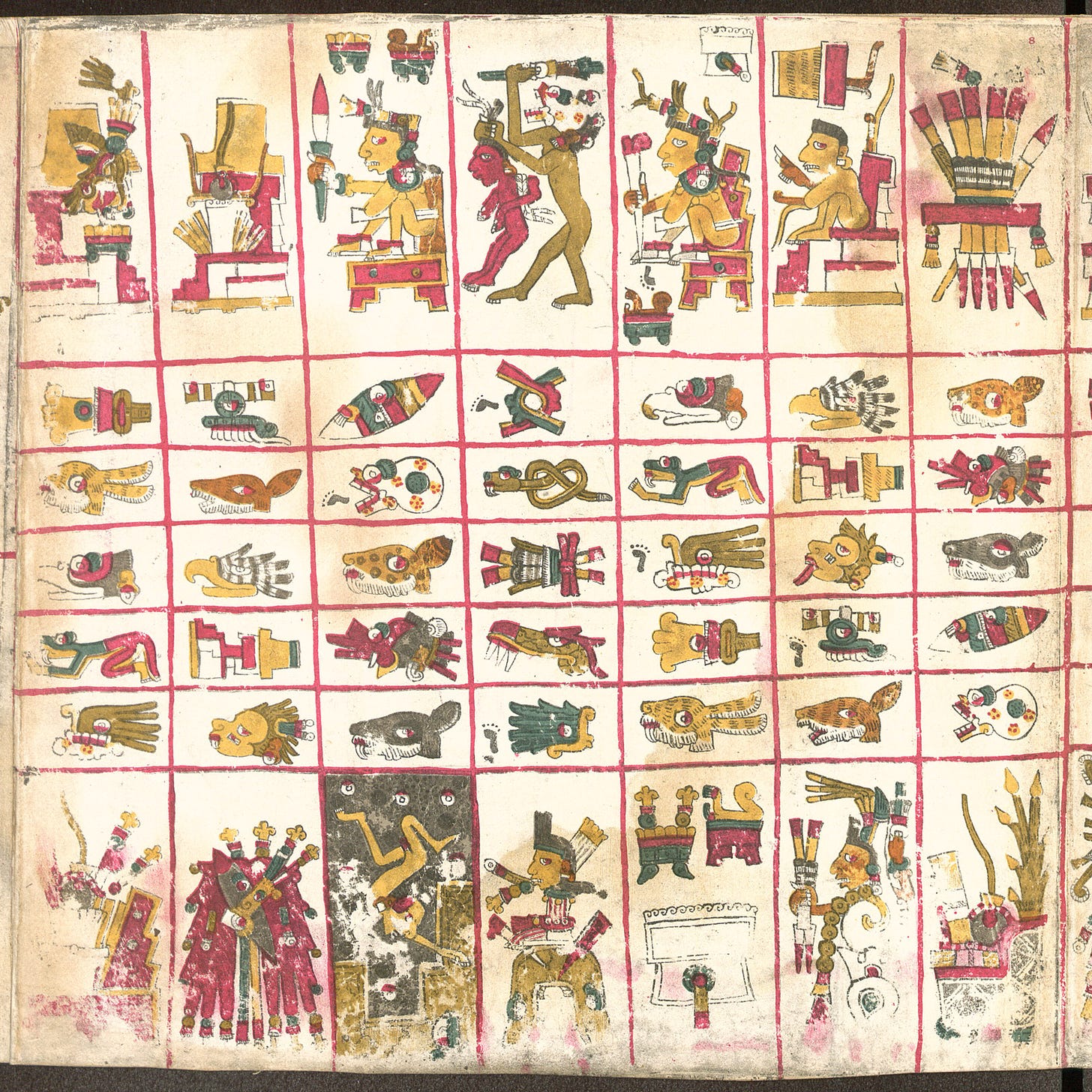
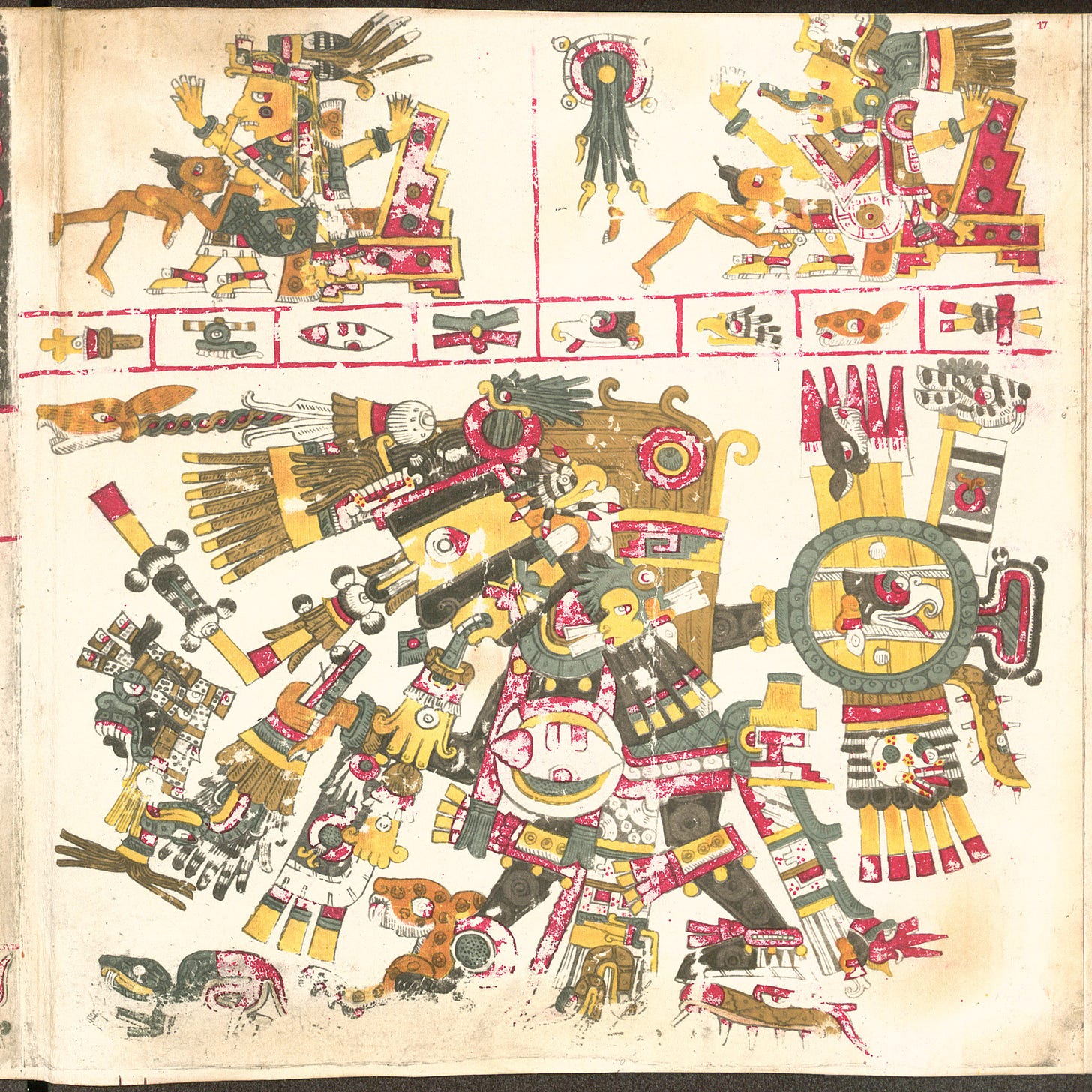
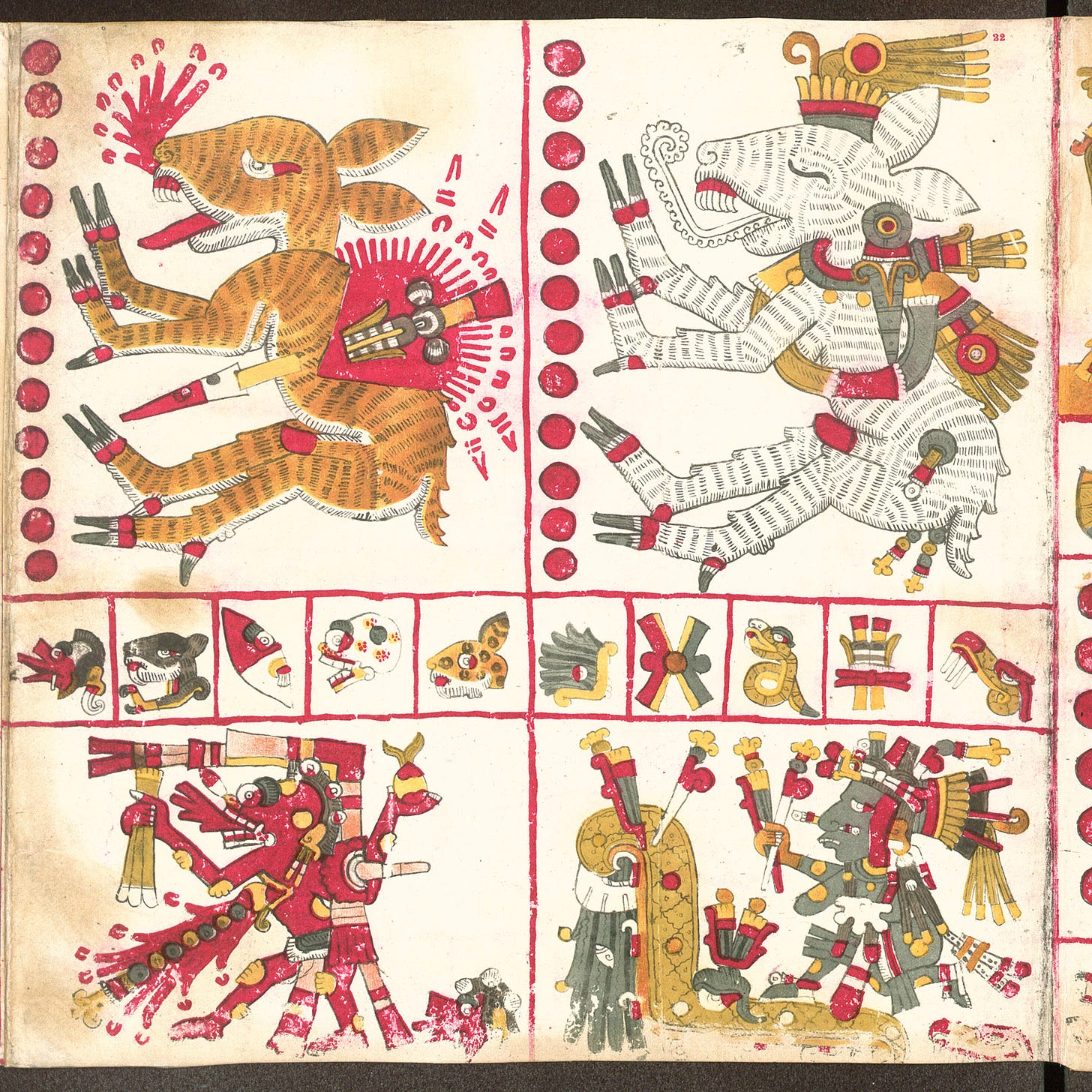
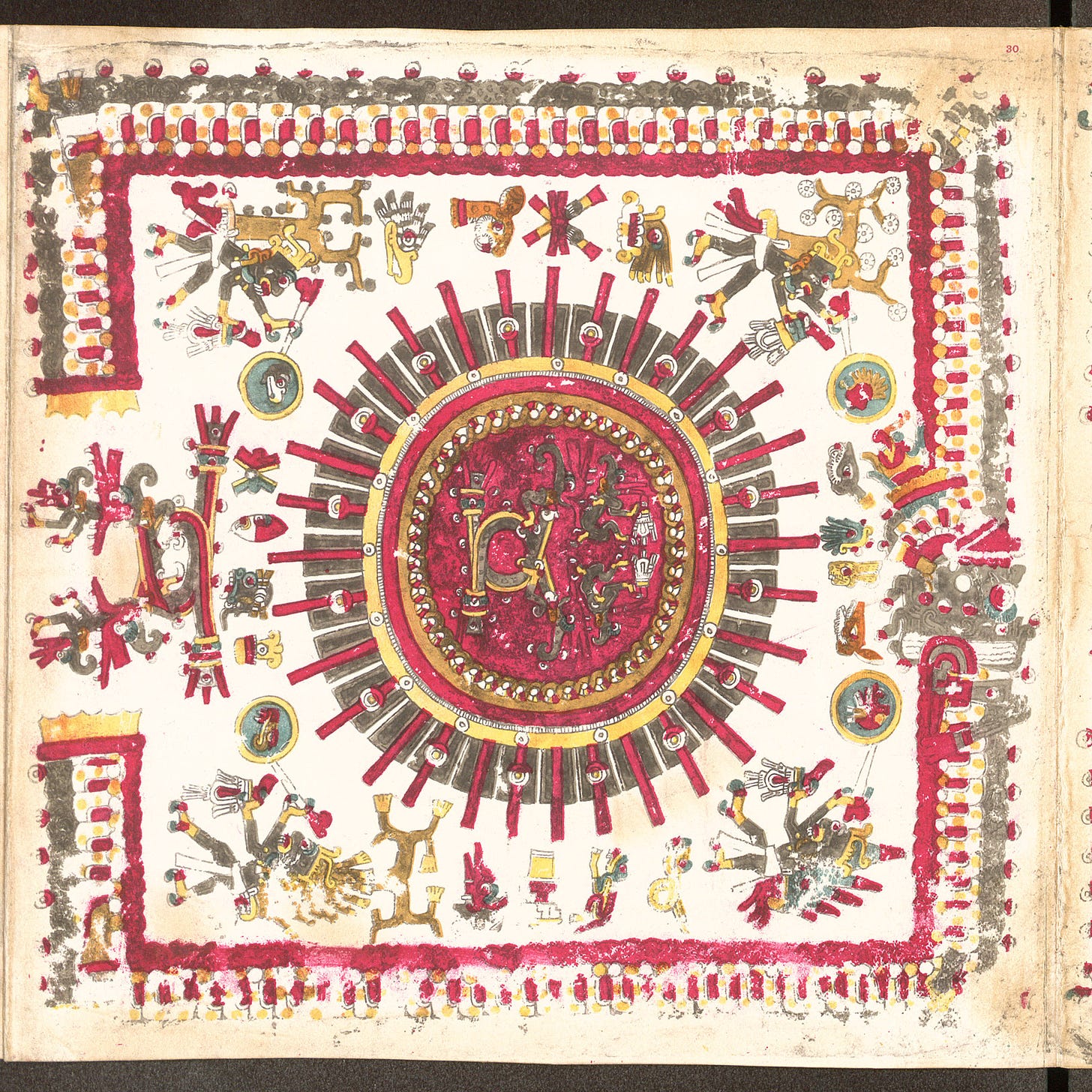



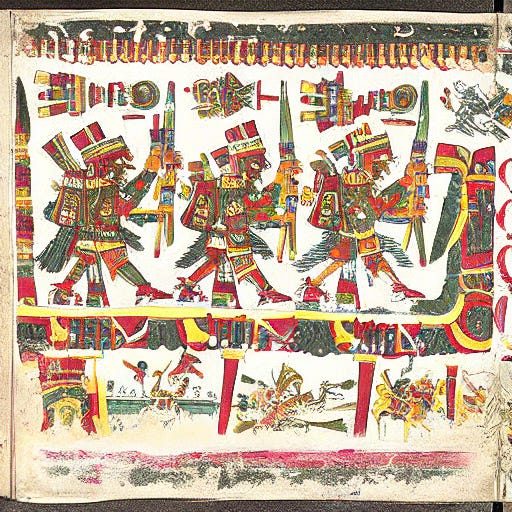
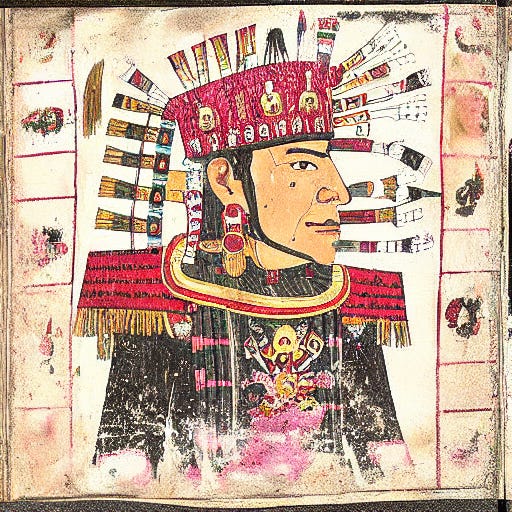
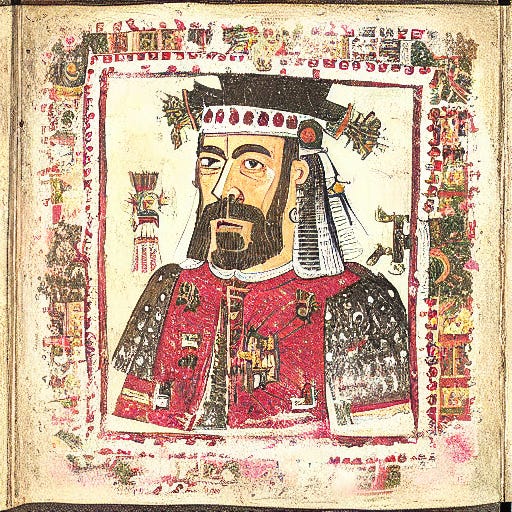
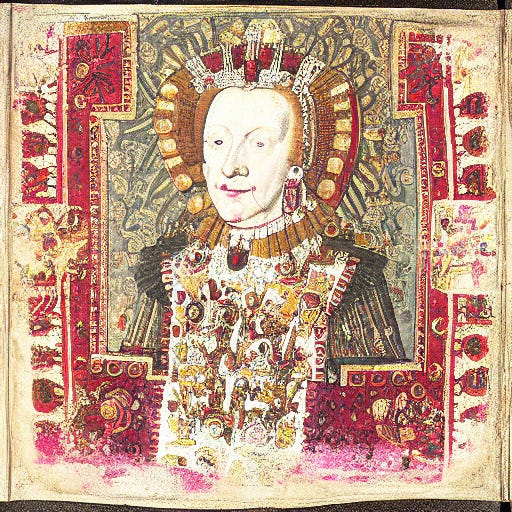
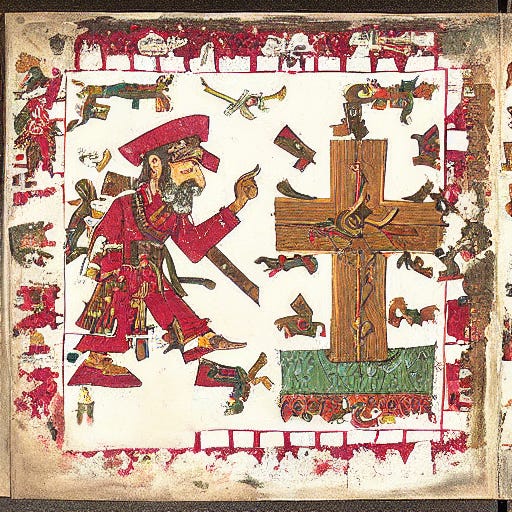
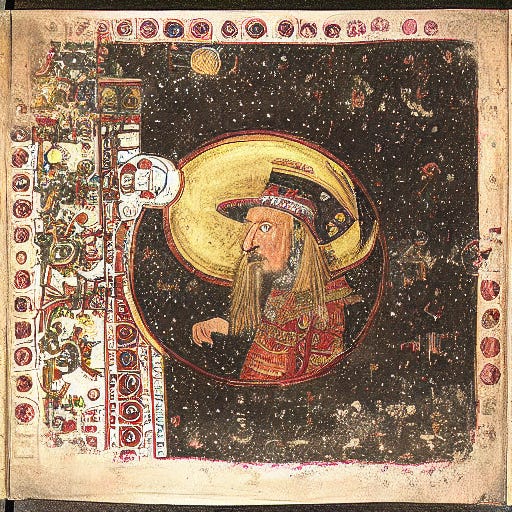
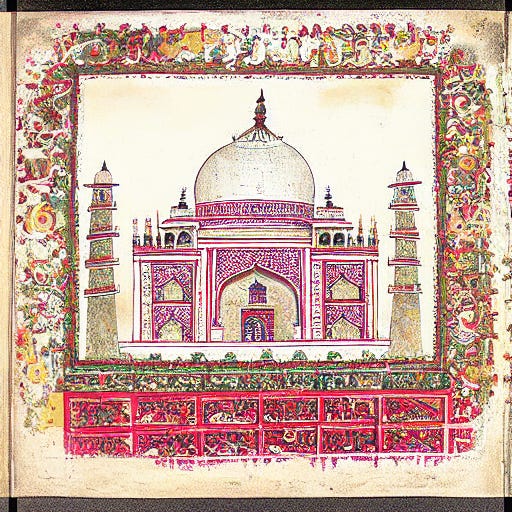
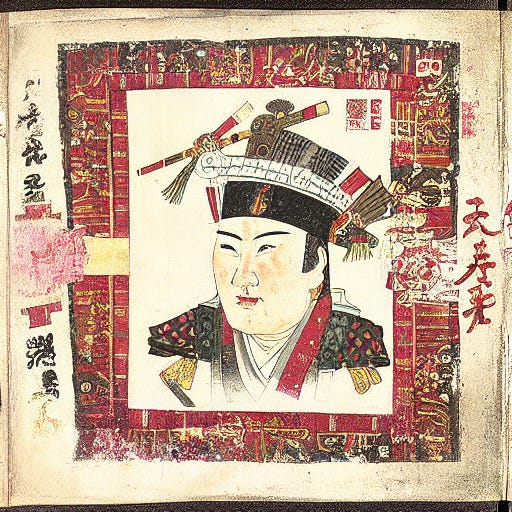
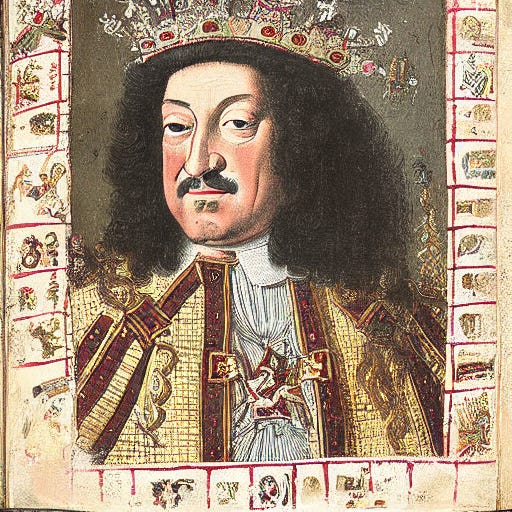


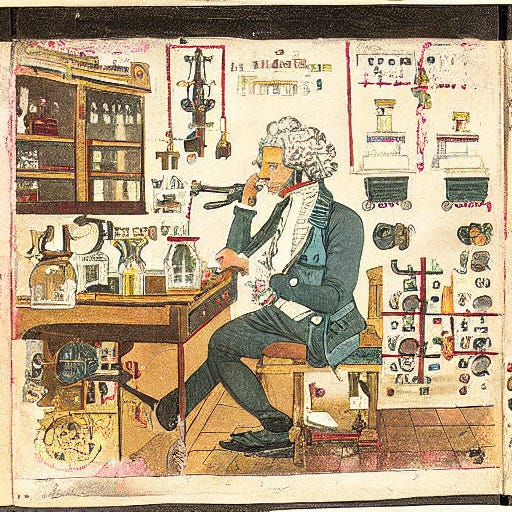
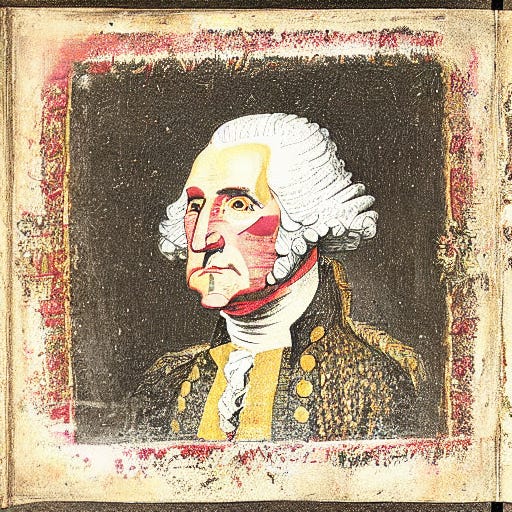
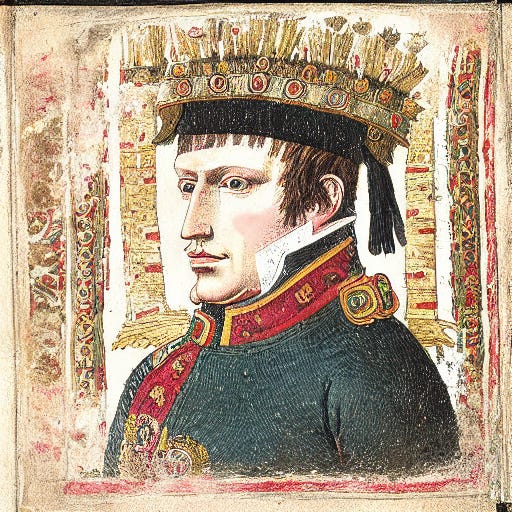
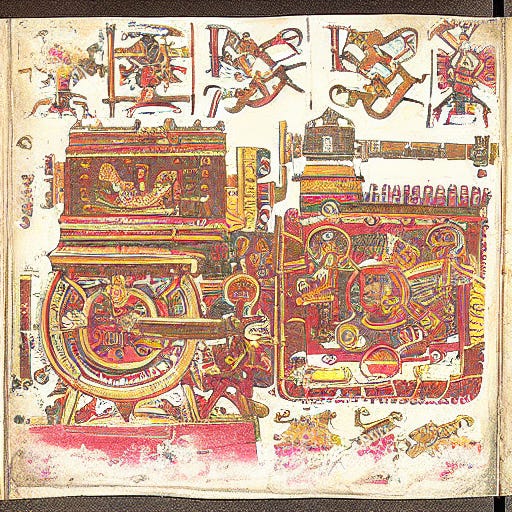
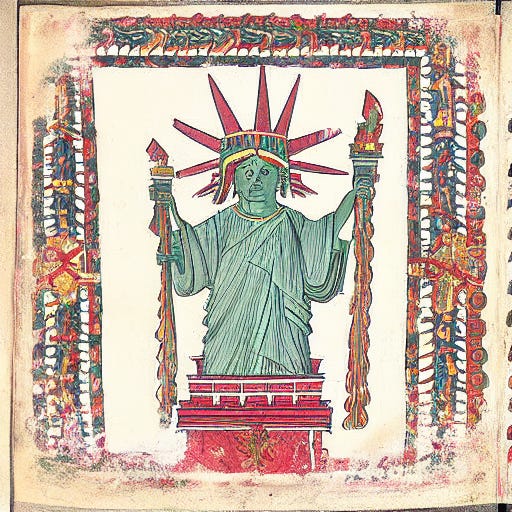
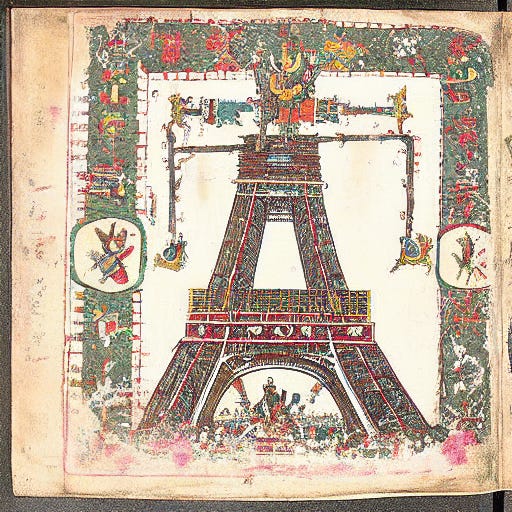
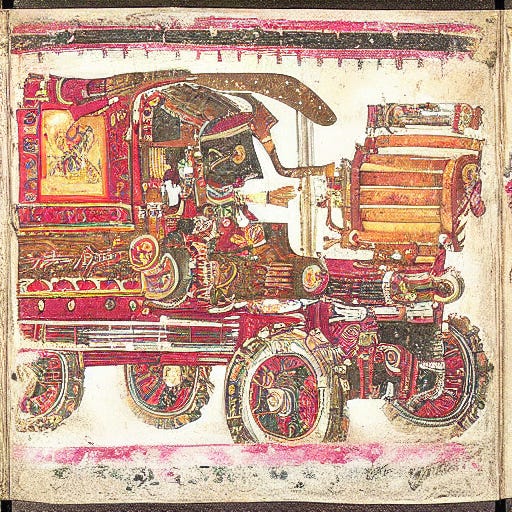
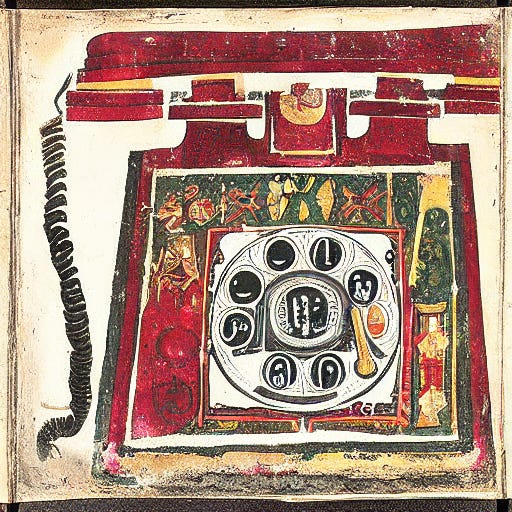
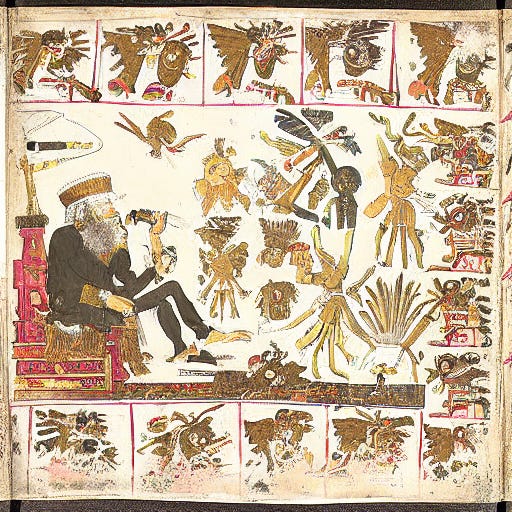
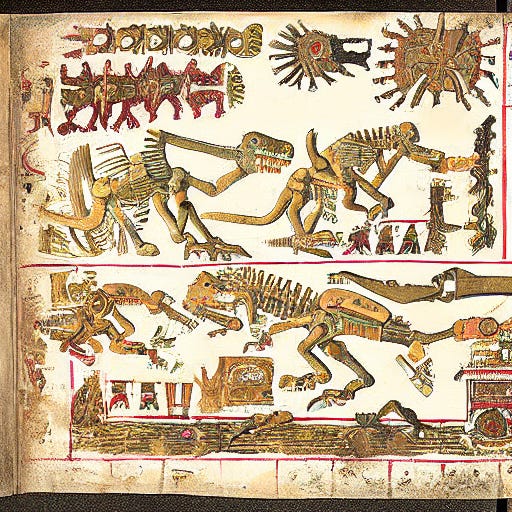

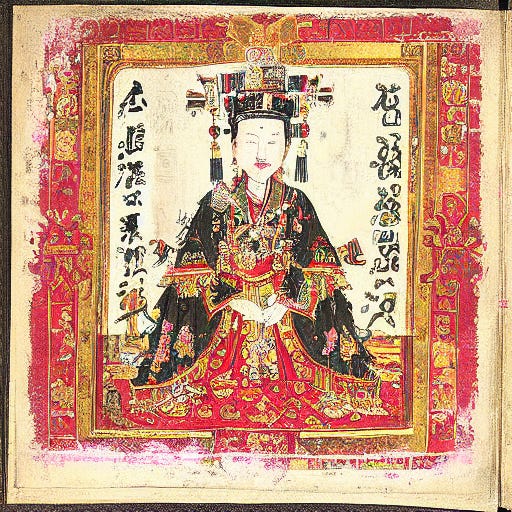
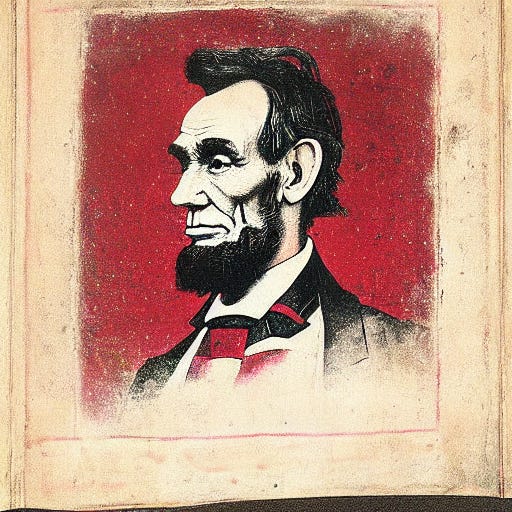

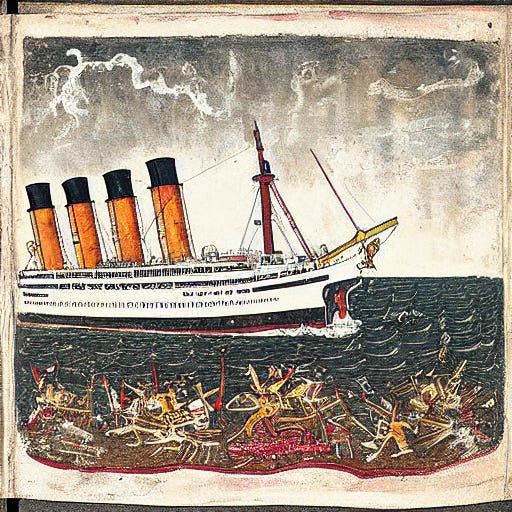
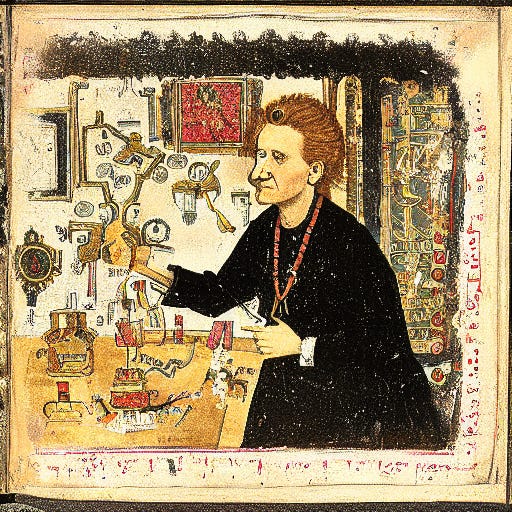

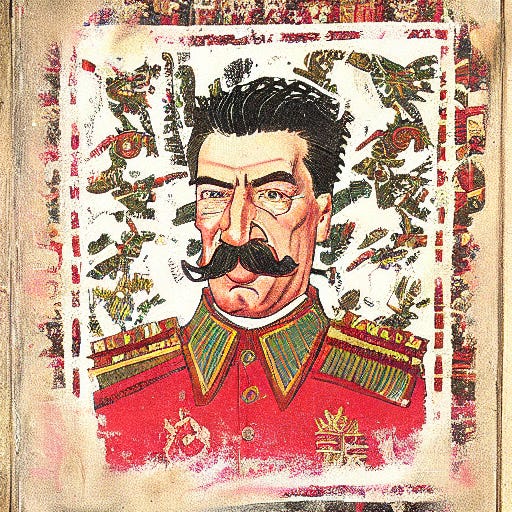
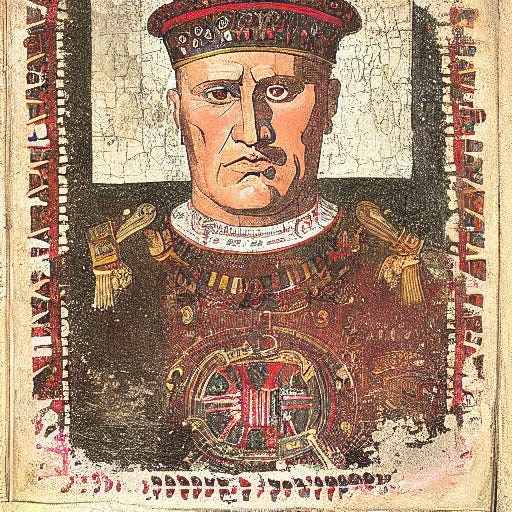
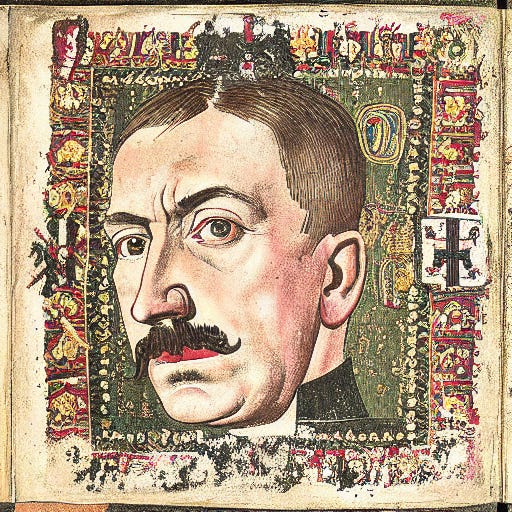
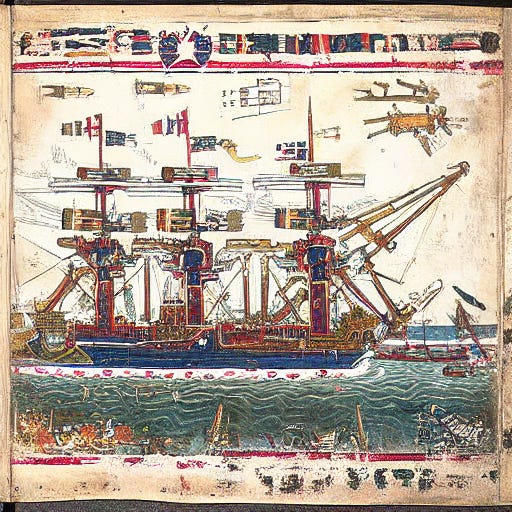
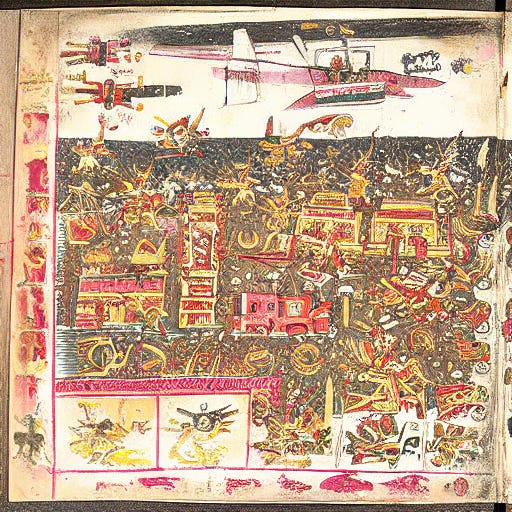
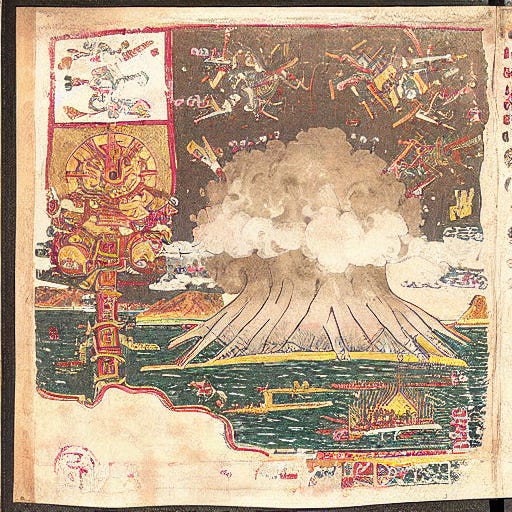
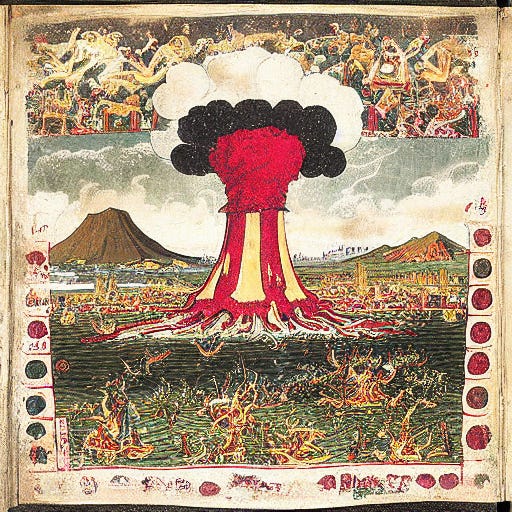
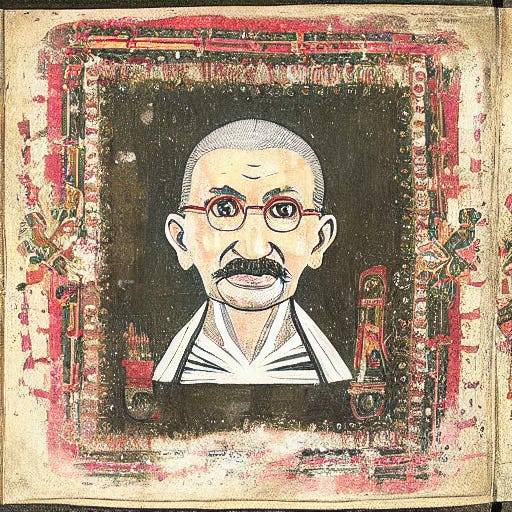





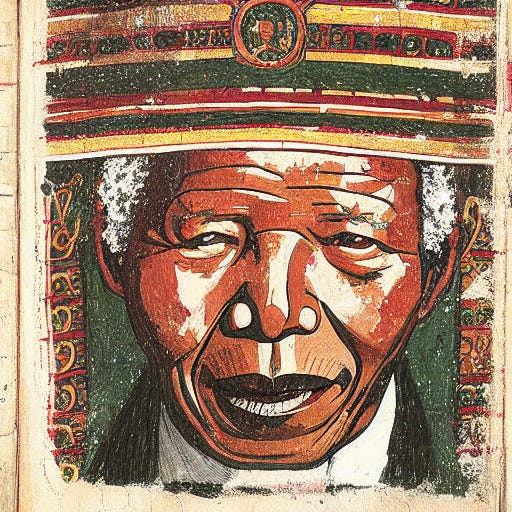

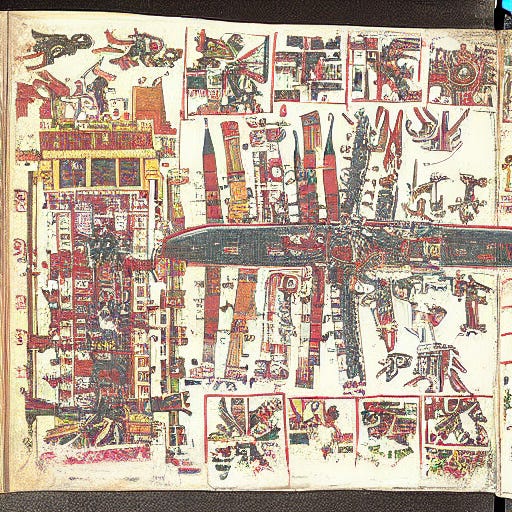
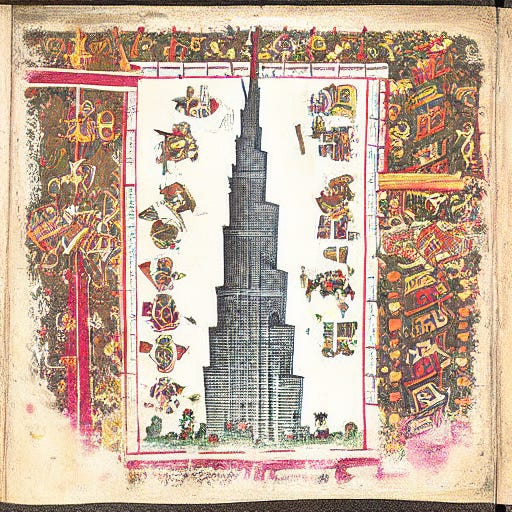
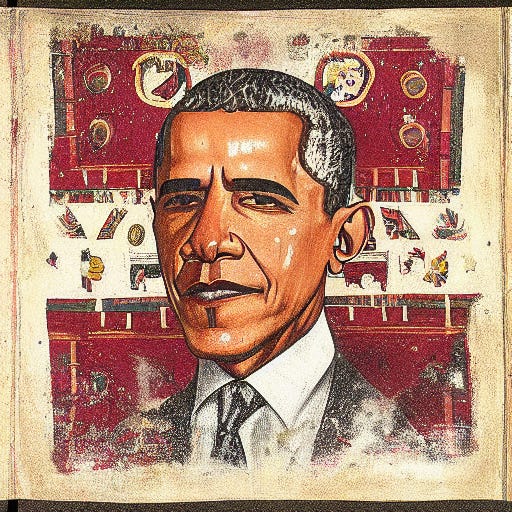
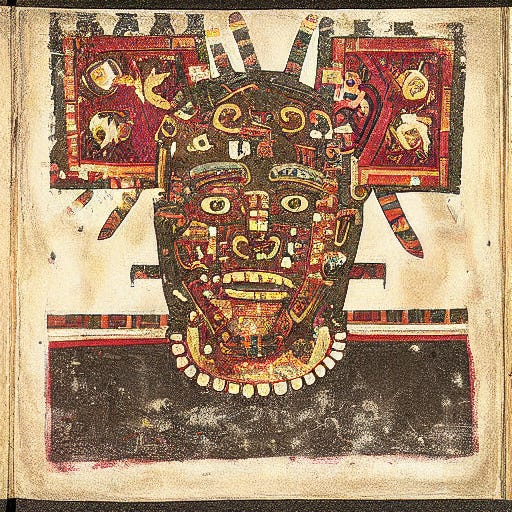
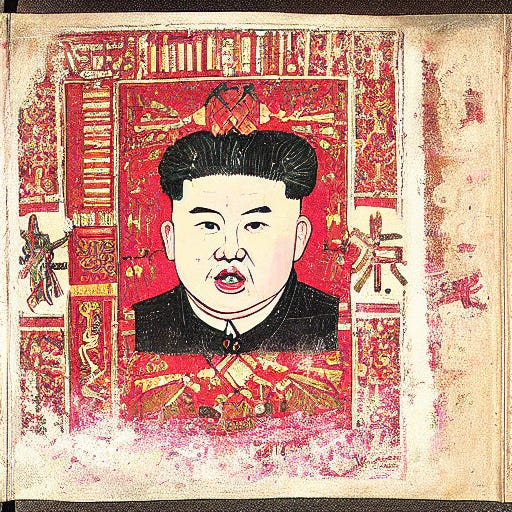
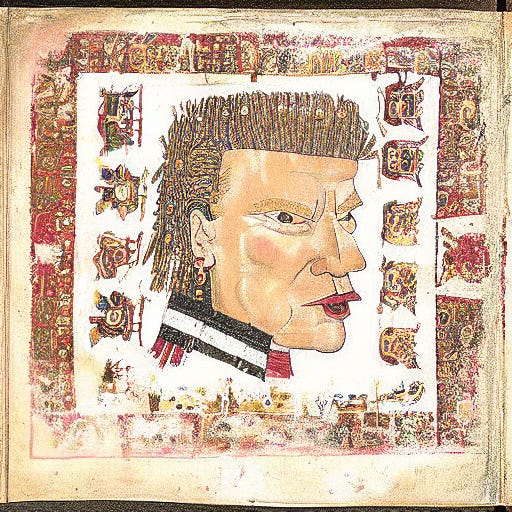
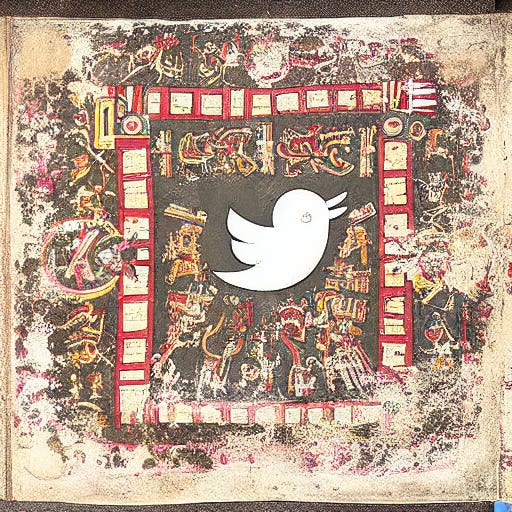
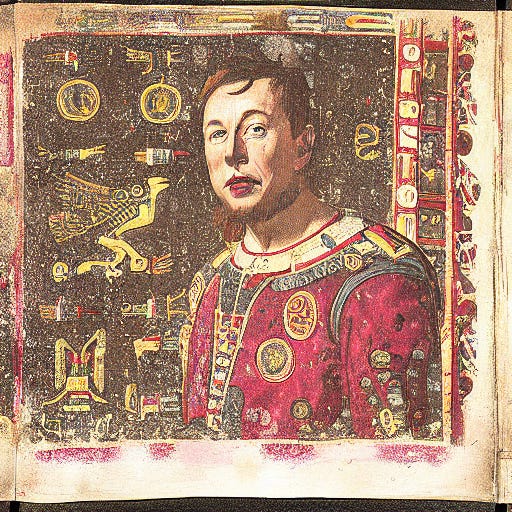
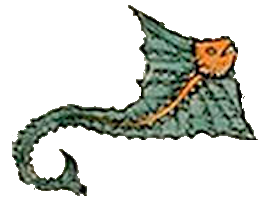
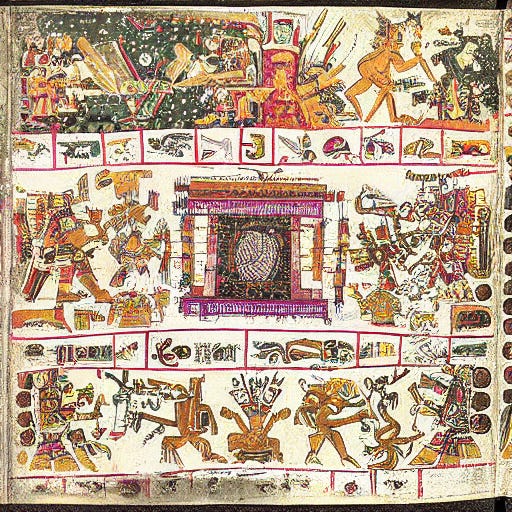
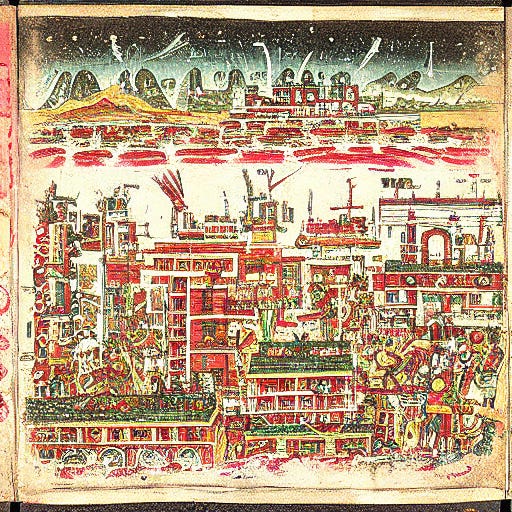

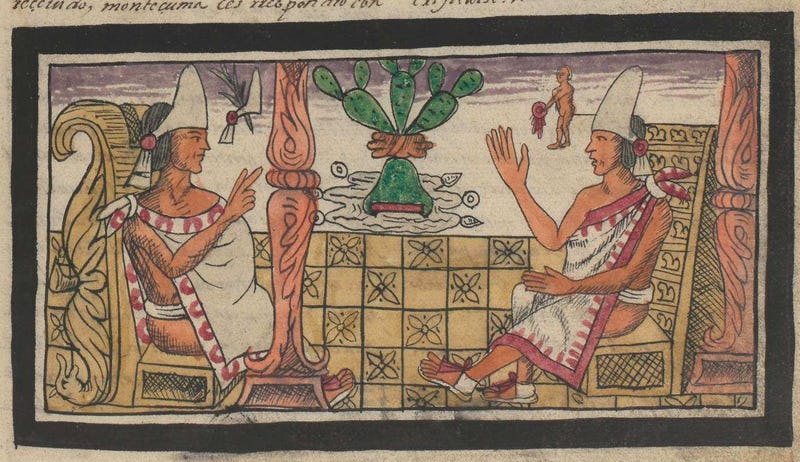
Ha! This is great. My personal favorite is Darwin's
It took me until the image of Elizabeth I to catch on to what you were doing. That's pretty good, I must say—a splendid concept! Trump looks more like David Bowie for some reason. Your readers might also be interested in looking at a set of illustrations I made for Radiohead's song "Fitter Happier" which can be viewed here: https://www.ruins.blog/p/fitter-happier-illustrated